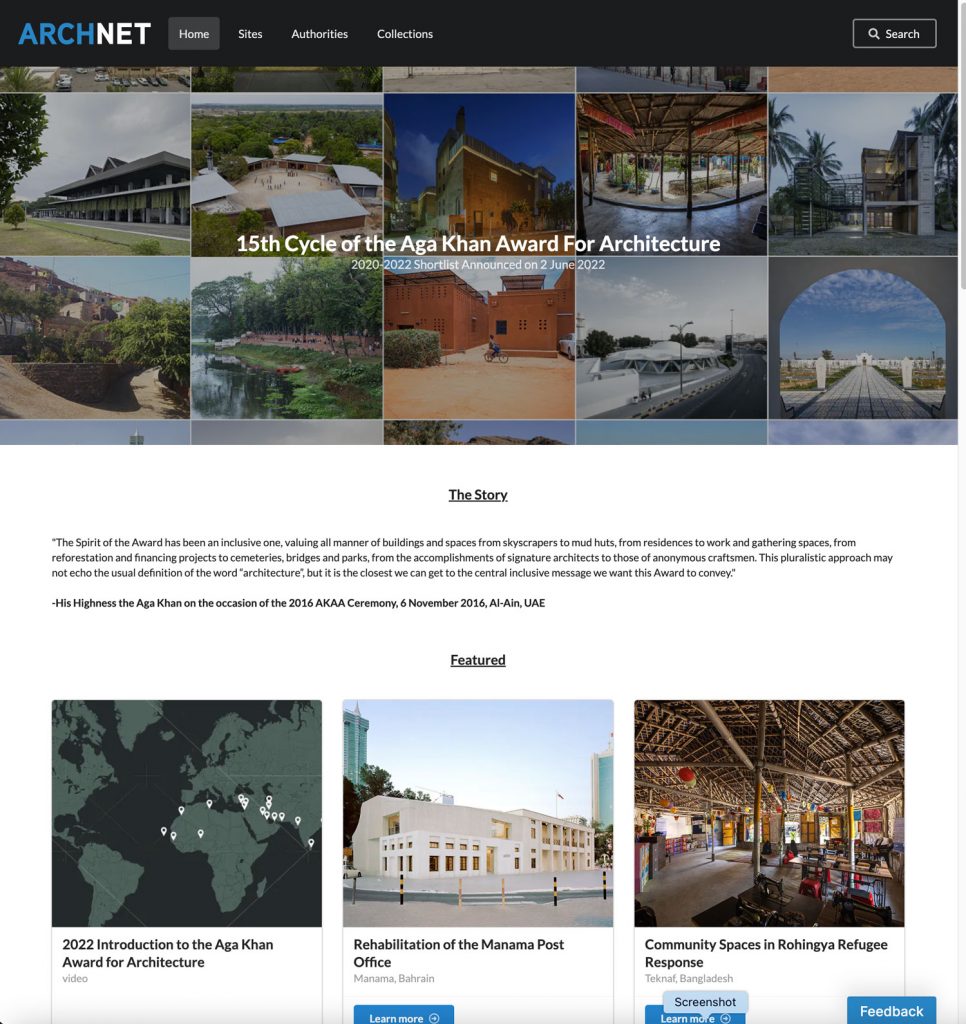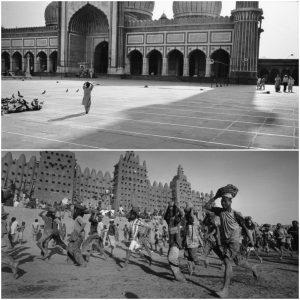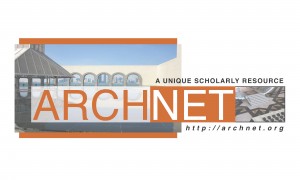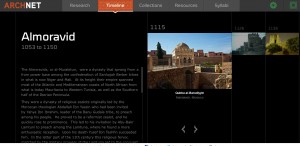The shortlist for the 15th-cycle of the Aga Khan Award for Architecture (AKAA) was announced today, and is featured on Archnet. The recipients will be announced in the fall.
My association with the AKAA is very limited. As Archnet Content Manager, I assist my colleagues at the Aga Khan Trust for Culture‘s offices in Geneva with getting AKAA information into Archnet and, subsequently, getting bringing attention to the projects though the social media for Archnet and the Aga Khan Documentation Center at MIT. So you may wonder why I am posting about the 2022 shortlist announcement on my personal website.
Quite simply, it is because I am proud to be associated with the AKAA even in my limited capacity, and even more so because I’d like to make more people aware of the projects that award has highlighted since the First AKAA Cycle, 1977-1980.
The Aga Khan Award for Architecture is an internationally recognized award that focuses on regions too often neglected by the juries of most major prizes in the West. I won’t speculate on the cause of this neglect except to say that it certainly isn’t due to a lack of merit in the projects built there. So many projects are nominated each cycle that even many that don’t make the shortlist are worthy of commendation.
More and more, some of the world’s most innovative and exciting structures are being built in Africa and Asia, hardly surprising given these are areas on the front lines of some of the most challenging problems that world currently faces.
Moreover, it is an award that places functionality on the same level as aesthetic criteria. Indeed, to be eligible for nomination, a project has to have been in use for at least a year. Projects that ultimately receive the Aga Khan Award for Architecture are projects already fulfilling their purpose.
Finally, I appreciate that the award honors diverse projects, from grand towers to schools made from locally available materials. In the speech he made at the 2016 ceremony of the Award, His Highness the Aga Khan explained this is an explicit goal of the AKAA. I’ll close this piece with those words.
The Spirit of the Award has been an inclusive one, valuing all manner of buildings and spaces from skyscrapers to mud huts, from residences to work and gathering spaces, from reforestation and financing projects to cemeteries, bridges and parks, from the accomplishments of signature architects to those of anonymous craftsmen. This pluralistic approach may not echo the usual definition of the word “architecture”, but it is the closest we can get to the central inclusive message we want this Award to convey.
https://www.akdn.org/speech/his-highness-aga-khan/aga-khan-award-architecture-2016-ceremony






